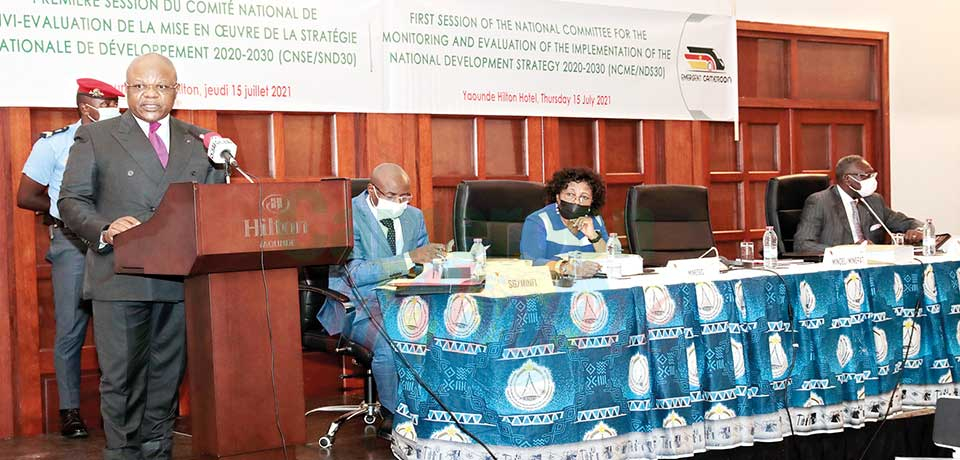The strategy that covers the period 2020 to 2030 is the second phase toward attaining vision 2035 of making Cameroon an emergent nation.
The Head of State, President Paul Biya in his New Year message to the nation on December 31, 2020 stated that Cameroon’s economy has maintained a certain capacity to rebound despite difficulties. The new compass for the rebound and recovery, he said is the National Development Strategy (NDS) that replaces the Growth and Employment Strategy Paper (GESP) that ran from 2010 to 2019.
According to President Biya, the National Development Strategy defines the main thrusts of the country’s planning up to 2030. The document draws lessons of the Growth and Employment Strategy Paper and sets new goals for period 2020 to 2030 with focus on structural transformation of the economy and inclusive development. Indeed, the National Development Strategy is the second phase of the 2035 vision. Government in Vision 2035 intends to achieve close to double-digit economic growth rate, reach the 25 per cent threshold as the share of manufacturing production in GDP and to reduce significantly poverty by reducing its incidence to less than 10 per cent and consolidate the democratic process and strengthen national unity while respecting the country’s diversity. In order to maintain the course of emergence by 2035, “the National Development Strategy aims to carry out structural transformation of the economy by making fundamental changes in economic and social structures in order to promote endogenous, inclusive development while preserving opportunities for future generations,” government states in the document.
The objectives of the National Development Strategy are to : establish conditions favourable to economic growth and accumulation of national wealth and ensure that the structural changes indispensable for the industrialisation of the country are achieved; improve on the living conditions of the population and their access to basic social services by ensuring significant reduction and unemployment.” Government further indicates that, the strategy sets out to “strengthen climate change adaptation and mitigate the effects of climate change and ensure environmental management that assures sustainable and inclusive economic growth and social development and to improve on governance to enhance policy performance towards achieving development goals.” For the objectives to be attained, government has to rely on four key pillars that include: structural transformation of the national economy; development of human capital and well-being; promotion of employment and economic integration; and governance, decentralisation and strategic management of the State.”
The basic orientations to realise the National Development Strategy include a mix between import/substitution and export promotion based on the comparative advantages of the national economy; a strategic and pragmatic State that sets up facilities for the emergence of the private sector as the main engine of economic growth and carries out targeted interventions in highly strategic sectors. Another orientation is the articulation between indicative and imperative planning, combining the rather restrictive format of the five-year planning and the indicate format of strategic planning.






0 Comments